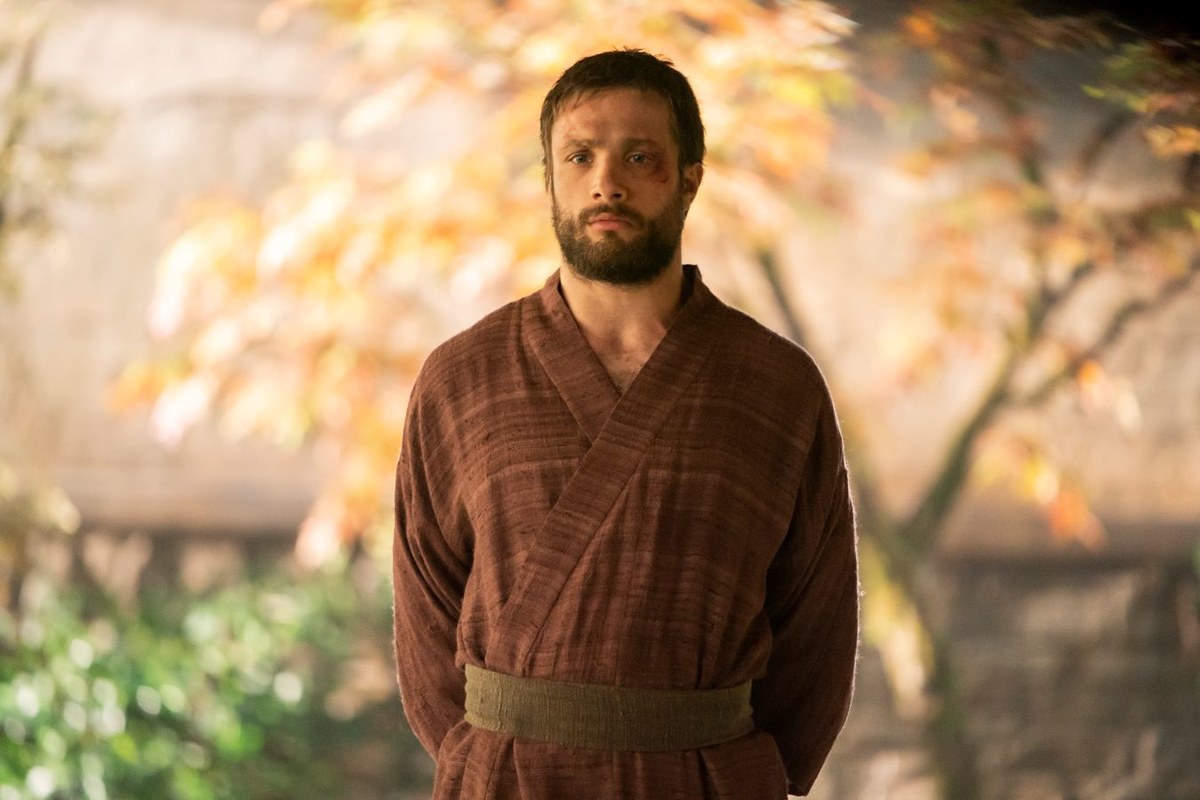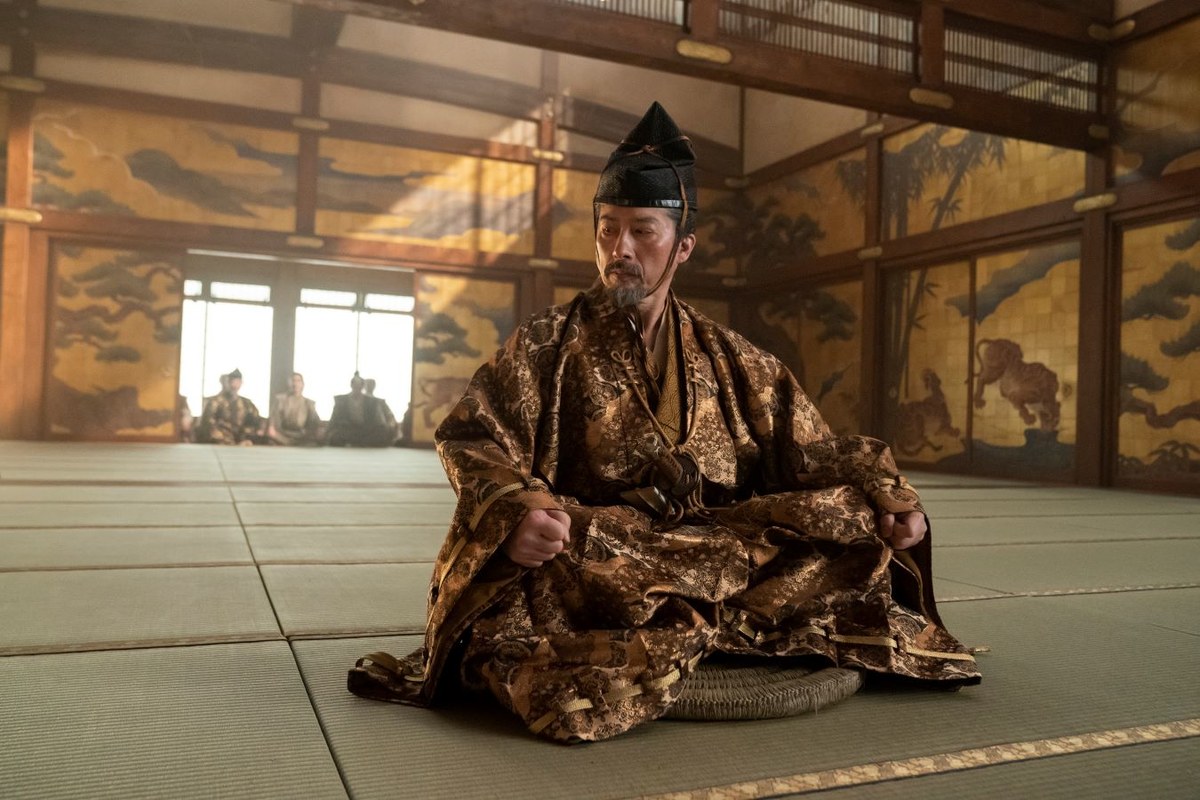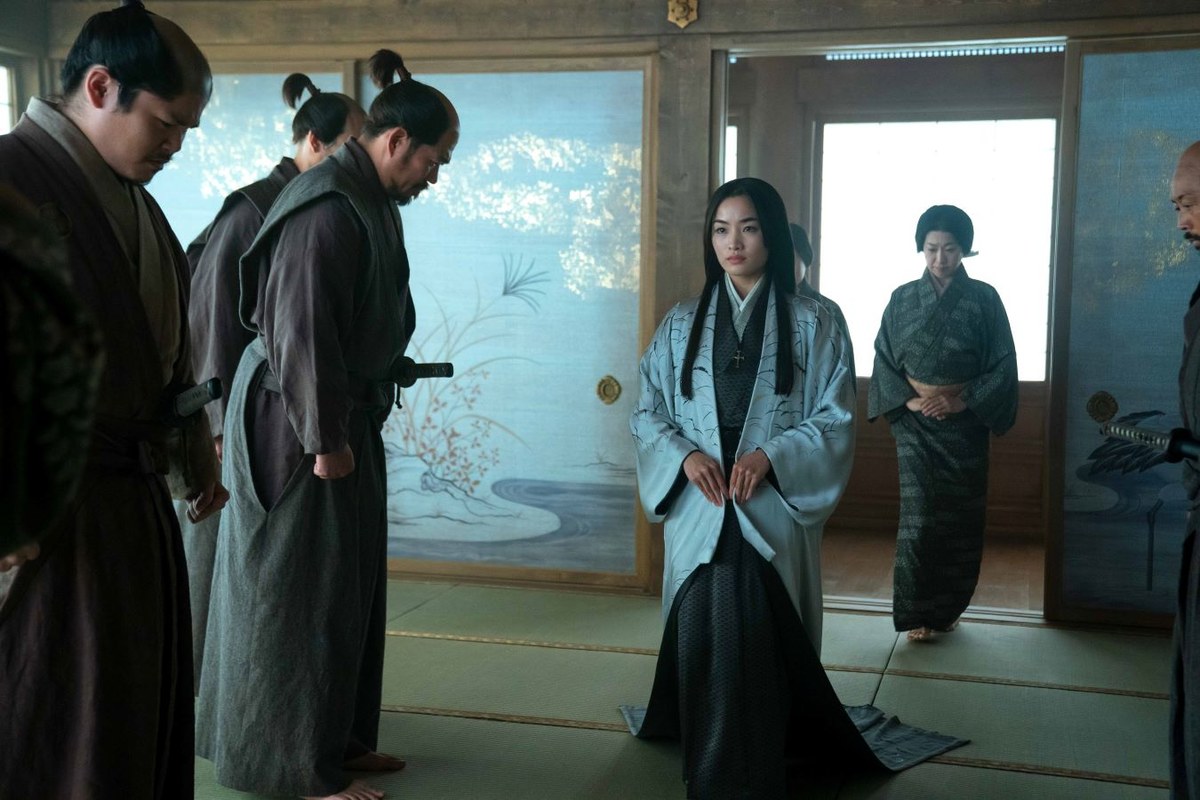DUBAI: “Shogun,” FX’s latest adaptation of James Clavell’s 1975 bestselling novel set in 1600s feudal Japan, is a far cry from the popular 1980s mini-series, told predominantly from the point of view of its Western protagonist John Blackthorne (played then by Richard Chamberlain, and now by Cosmo Jarvis).
While Jarvis’ Blackthorne gets ample screen time in the new iteration of “Shogun,” now streaming on Disney+ in the Middle East, co-creators and husband-wife duo Justin Marks and Rachel Kondo were keen to center the story around its Japanese characters.

Cosmo Jarvis as John Blackthorne ‘Shogun.’ (Courtesy of Disney+)
“Shogun” follows the story of Lord Yoshii Toranaga, played by producer Hiroyuki Sanada, as he fights for his life against enemies on the Council of Regents who unite against him. When a mysterious European ship is found marooned in a nearby fishing village, its English pilot, John Blackthorne, comes bearing secrets that could help Toranaga tip the scales of power and devastate the formidable influence of Blackthorne’s own enemies.
In the meantime, Toranaga’s and Blackthorne’s fates become inextricably tied to their translator, Toda Mariko (Anna Sawai), a mysterious noblewoman and the last of a disgraced line.
Talking about the relevance of the book and why they wanted to revisit the story now, Marks told Arab News: “This book has such a great legacy that so many movies, television shows and other stories have taken from it over the decades since it came out. So, how do we tell something new? And, fortunately, when you open up the book, you realize Clavell is already playing with some of these very modern ideas of how we encounter other cultures, how we encounter ourselves within those cultures, and he’s doing so with really great sensitivity. As we began to talk about that, we realized this is a story that has to be told again, already 50 years later, because it seems like we’ve forgotten a lot of its lessons.”
Kondo said: “It almost feels like it was meant to be told again, in that it felt weirdly and unexpectedly modern — it felt timeless. And so, here we are a few generations later.”

Hiroyuki Sanada plays Toranaga, a Japanese lord loosely modeled on Tokugawa Ieyasu, the military ruler who helped to unite Japan in the early 17th century after a long period of civil war.
(Courtesy of Disney+)
Playing the central Japanese character in the show is Sanada, who plays Toranaga, a Japanese lord loosely modeled on Tokugawa Ieyasu, the military ruler who helped to unite Japan in the early 17th century after a long period of civil war, introducing a period of peace that lasted for more than 200 years.
Sanada, who broke into Hollywood with the 2003 film “The Last Samurai,” is also a producer on the show and was keen to bring his years of experience working in Japanese films to Hollywood.
And to make sure he could play the part when he was in front of the camera, it was important to Sanada that all matters of production were taken care of in advance.
“I made sure to prepare everything beforehand before I sit in front of the camera,” Sanada told Arab News.
“So, first of all, we tried to get the Japanese crew who are specialists for Samurai movie-making, then we got specialists for the wigs, costumes, props, master of gesture, master of tea ceremony, everyone. So, we had a good team for each department to make the show authentic as much as possible. And we also had a rehearsal training for the young actors and extras. So, before starting shooting, I prepare everything. So, when I was on set as an actor, I felt freedom, relaxed. It was fun. It felt like a reward,” he added.

Anna Sawai as Lady Mariko in ‘Shogun.’ (Courtesy of Disney+)
And this authenticity is exactly why co-creators Marks and Kondo were ecstatic to have Sanada join the team.
“The thrill of getting to have Hiro onboard, not just as our star, but, really, as a resource, as a producer on the show, was what made the difference between a show you’ve seen before and a show you’ve never seen before,” said Marks.
“In our early conversations with him, we asked him: ‘You’ve been working in Hollywood for 20 to 25 years, what have we gotten wrong? And how can we change the way that we work in order to improve upon that?’ And, from the very beginning, he would just sort of say, here’s who you need to hire on this show, you need a cultural adviser, you need a language adviser, a historian, a Japanese playwright, period pros who can add a little bit of modernity, but also make something feel like it’s a touch classical as well. And these are all things for us as Americans coming into this, you know, that are far over our heads. And so, without having Hiro, we wouldn’t have been able to reach for the level of authenticity that we were after.”
For Sanada, who began acting at the age of five and trained in martial arts soon after, “Shogun” is a chance to introduce the rest of the world to Japanese culture, but sans the Western gaze.
“I think this is a great novel — a great story to introduce our culture to the world. Earlier, our audience can see feudal Japan through Blackthorne’s blue eyes. But this time, it is more like a novel. We tried to create the script, like not only blue eyes, but put more Japanese lens on the script and then go deeper for each character or details,” said Sanada.


























